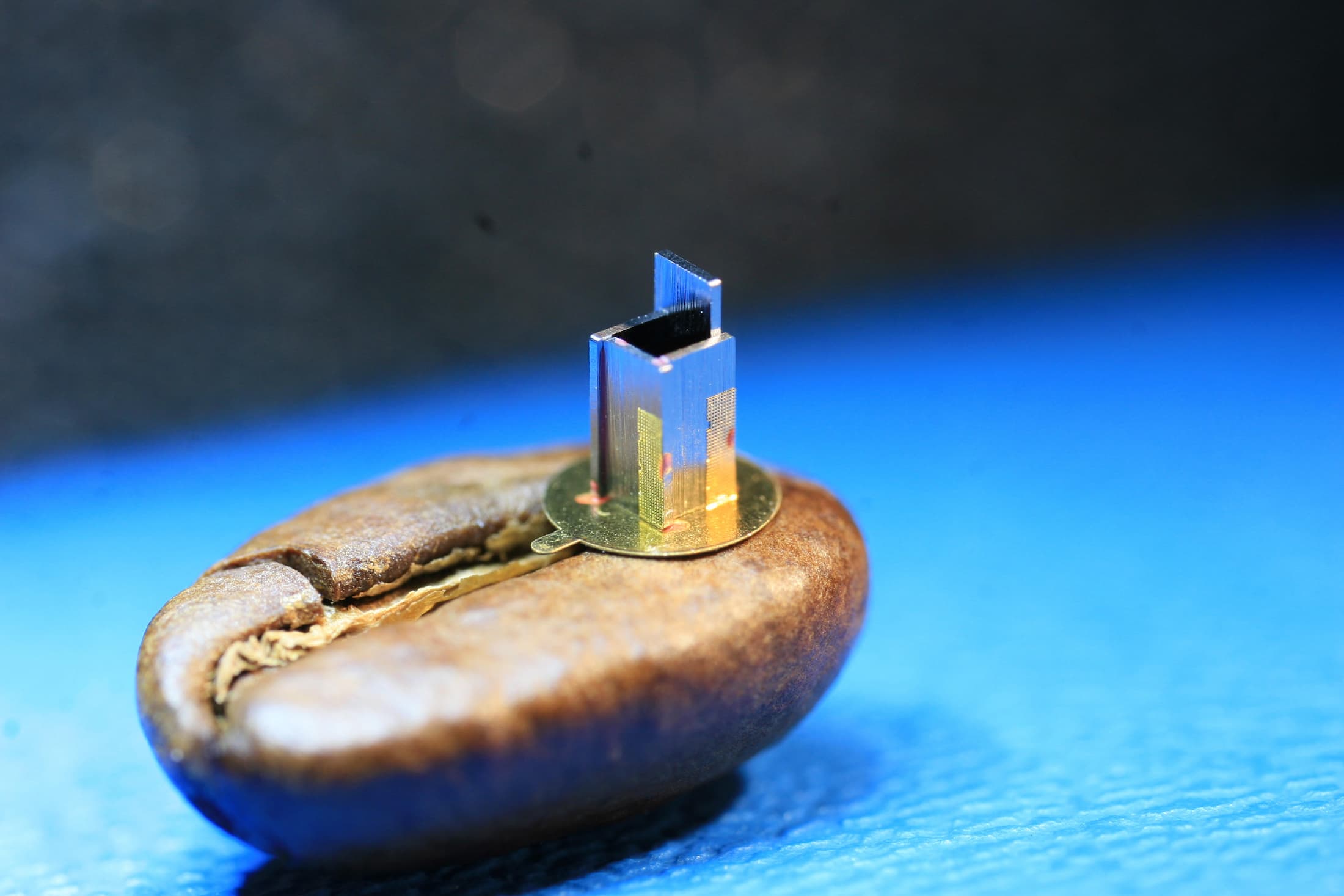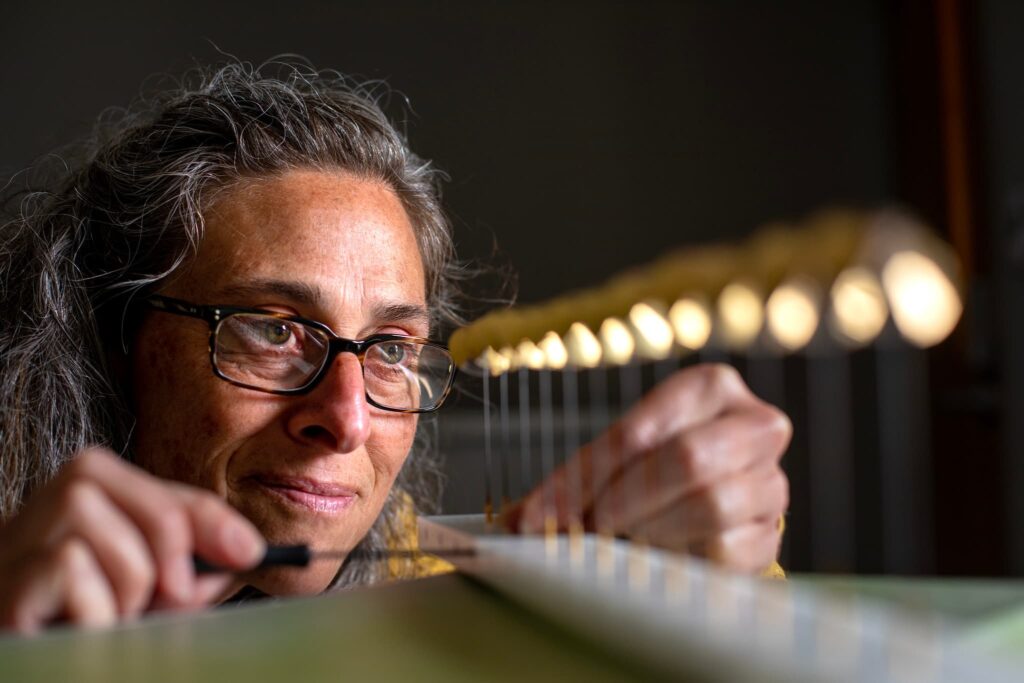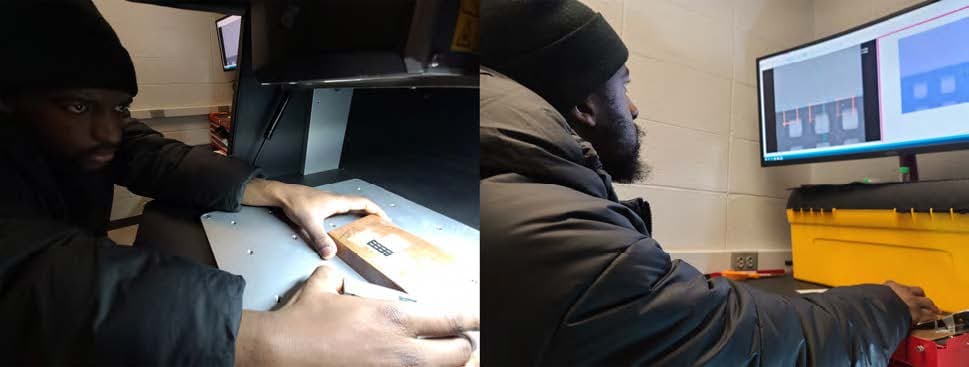
$1.2 million for laser target research laboratory
The Michigan Target Research and Fabrication Laboratory will design targets and a soft robot for high-intensity laser experiments.

The Michigan Target Research and Fabrication Laboratory will design targets and a soft robot for high-intensity laser experiments.
A laboratory dedicated to creating and developing laser targets, funded by the U.S. Department of Energy’s Office of Science, has been awarded to the University of Michigan.
The Michigan Target Research and Fabrication (MiTRF) Laboratory will be led by Carolyn Kuranz, an associate professor of nuclear engineering and radiological sciences at U-M, and will support experimental campaigns executed by LaserNetUS, a Department of Energy-led alliance of high-intensity laser facilities across North America.
“This is such an exciting opportunity for us,” said Sallee Klein, the senior engineer on the project. “We have been working for many years to bring U-M into the forefront of target assembly. High-energy-density physics (HEDP) relies on precision-made targets. It is a highly specialized field that we are eager to have the U-M community involved in. We have access to such a wide variety of enthusiastic students who have a lot to contribute. There is a high demand for our targets within the HEDP community, yet there are only a handful of labs like ours in the U.S. Nearly all of these labs are integrated within National Laboratories, making it difficult for most students to have access to a very important aspect of HED. We hope that MiTRF will intrigue a new generation of students who will find HED targets as fascinating as we do.”

For the past two decades, the lab which will now be known as MiTRF has been producing targets and components for the University’s high-power laser facilities. Beginning in 2016, the lab began supporting a growing number of external campaigns, including various LaserNetUS experiments.
With this funding, MiTRF will expand its capabilities and begin making targets for high-repetition-rate facilities. These facilities can fire the laser as fast as once per second. The team will also develop entirely new targets that align with the needs of LaserNet facilities, which might include shooting various liquids or gases, thin strips of different materials, or substances that have properties of both liquids and crystals.
MiTRF will create these targets using a variety of tools including a special laser that can precisely cut metals and other materials as thin as 100 micrometers, about the width of a strand of human hair. To measure the precision at which individual targets are made to experimental specifications, they’ll use a digital microscope that allows users to see objects from many different angles and produces 3D images. New targets will be tested at the U-M Gerard Mourou Center for Ultrafast Optics λ3 Facility, a laser system that produces incredibly short pulses of light—each lasting just 30 quadrillionths of a second—about 500 times every second.

The targets will need to remain operational around the high-repetition-rate laser systems used in LaserNetUS facilities, which shoot out light very quickly and can increase radiation to levels unsafe for human operators. Enter: robots.
MiTRF will capitalize on the robotics research of Y Z, professor of nuclear engineering and radiological sciences. Professor Y Z’s lab specializes in creating novel robots inspired by nature’s ingenuity, including an untethered modular soft robotic arm that represents a remarkable leap forward in robotic innovation.
Aside from the obvious difference of being made with soft materials, these new lightweight soft robots are different from traditional hard robots because they can do tasks that hard robots can’t—like gently picking things up or even being worn like clothes. They can copy how our bodies move and bend, making them an ideal stand-in for dangerous tasks. Because they can bend and move easily and do not require much force, soft robots are safe to operate around people. They can work in tough places and can handle strong radiation because they aren’t built with a lot of electronics and motors. Professor Y Z will build a new type of robot that blends the strengths of both hard and soft robots.
“I am extremely excited to be part of this collaboration led by Prof. Kuranz,” said Prof. Y Z. It provides me with a unique opportunity to delve into the realms of high-energy-density physics and extreme physics while also contributing new ideas regarding the development and deployment of advanced robotics and automation to this dynamic field.”
Another U-M collaborator on the project is Yong Ma, an assistant research scientist of nuclear engineering and radiological sciences.